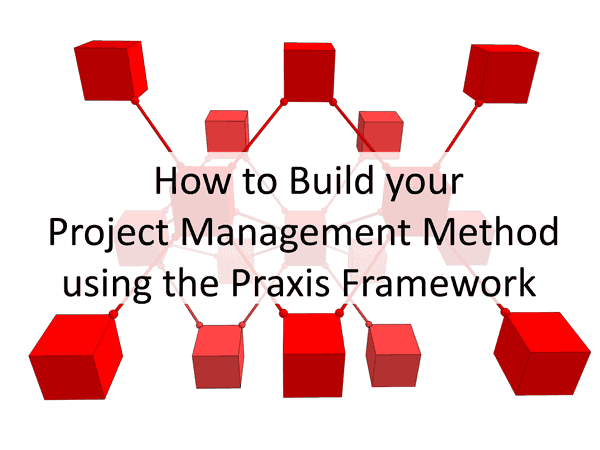Several years ago we discussed the value of a project management framework as a way of generating a consistent approach to project management. Since then we have see more and more organisations adopting frameworks and getting benefits of improved governance, more consistent project delivery and generally less chaos and confusion.
Challenges implementing a project management framework
However adopting a project management framework the first time can be challenging for many organisations. They were unsure where to start and which elements they need. Many of the published approaches such as PRINCE2 and the APM or PMI Guides to the Bodies of Knowledge are too high level to apply directly. Often to overcome these problems organisations would employ consultants to spend many hours writing a project management framework for them. This is neither cost-effective nor is the framework very specific to the needs of the organisations. However this all change with the Praxis framework. The Praxis framework is an open source project management method which draws from different bodies of knowledge; to provide a consistent framework for project management. The nice thing about praxis framework is that most of the work is already done and those responsible for implementing the framework can focus on tailoring the model to fit their organisation.
So what is in the Praxis framework?
The praxis framework is organised into five areas. These are;
Knowledge which describes what project managers need to know in order to manage a project. Many of these were already familiar to project managers including stakeholder management, risk management, cost management and scheduling.
Processes which define step-by-step approaches to project management tasks such as defining the budget or preparing the project management plan. This section also includes template documentation such as the business case, risk registers and change control forms.
The third part the competency framework which can help identify how competence gaps in applying the knowledge and processes described above. This is very helpful in identifying those parts of project management individuals need to develop.
Fourth part is an organisational maturity model which looks at how well project management is applied across the organisation at a programme, portfolio or project level. This is helpful for organisations trying to understand where organisations need to target their development efforts.
The final section is a library which contains a comprehensive description of the models tools and techniques used in project management.
Where to start applying the Praxis framework?
But where do you start if you want to adopt a project management method based on the Praxis framework. Let’s set out a step by step guide
Step 1 Understand where you are as an organisation. The first step is to understand your own strengths and weaknesses. The best place to start applying the Praxis framework is an assessment project management competence for individuals or an assessment the overall project maturity. These assessments will indicate which areas of project management need development and they can be cross-referenced with the knowledge and process areas in the Praxis framework.
Step 2 Select the element of the Framework that you need. The Praxis framework covers the entire range of project, programme and portfolio management. This is going to be too complex for most organisations so you need to identify how to tailor the framework to fit the needs of your organisation. This should be based on the outcome of the needs analysis conducted in step 1. From this you should have a list of elements that you need, for example you may decide that you need a project mandate, but not a vision statement.
Step 3 Prepare a communication package to launch the Framework. You will need to communicate the Framework in your language, using your projects and examples. We find this is best done by a combination of a printed brochure and an intranet site for key documents. Pointing people to the complete Praxis framework is just going to be overwhelming for most people.
Step 4 Plan and implement a communications package. To get buy in you need to communicate the new framework across the organisation, so we recommend a launch road show, either face to face or online. Often training will be required to up skill teams in the key areas. The design of the training should be informed by the assessments in step 1.
Step 5 Monitor, measure and improve. Don’t expect to get it right first time. Any change in the way an organisation does projects is bound to generate resistance at first. The key thing is to listen and reflect on the feedback . However we would recommend letting the method settle for some time before making changes, if you change things to often people get confused and they need time to try it before they can give proper feedback.

 Paul Naybour
Paul Naybour

0 Comments Leave a comment